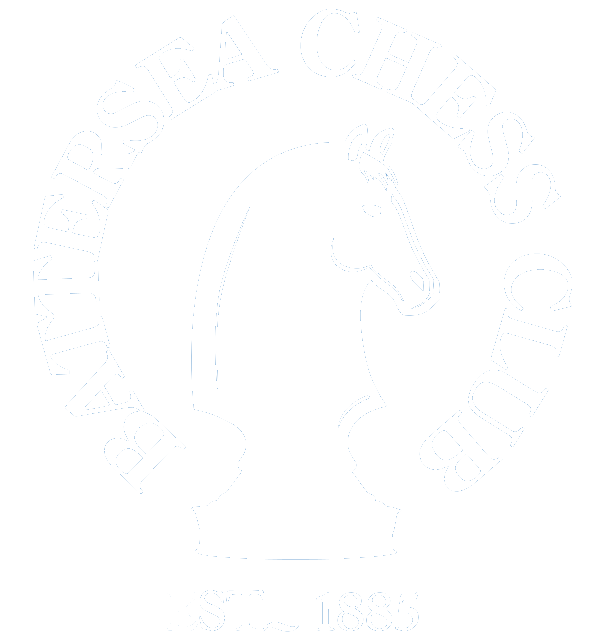Playing chess for your country – an honour, an experience, and adventure.
Last weekend, I found myself playing for the Surrey u120 team against Middlesex. As it happened, I was the only Battersea representative who was selected. We were a team of 12, with colleagues from Godalming, Guildford, Dorking, Kingston, Coulsdon, etc.
We trekked to the wilds of North London and the Willesden Working Men’s Club. By all accounts this was a palace of entertainment in its heyday – I counted two dance floors! – but has since fallen on hard times.
A bit like my chess really.
I used to play for one of the Surrey teams a few years ago. That year, we made it to the national final and ended up in 2nd place. Since then, however, my grade has declined. So I felt at home in the faded grandeur of the WWMC venue.
I’d never been to Willesden before and my route (via train and foot) took me from the Brazilian part of London (little Rio) to the Romanian part (little Bucharest). And my opponent was Chinese (I’m told he still is!). The multicultural aspect of London still amazes me.
On the multi-county front, we eked out a 6.5-5.5 victory against a team that out-graded us by an average of 12 points on every board
As you might imagine the games were not the best (this is why we are u120!) but for those of you who are interested, here is my victory against William Kwoh. I’ve done some analysis – and the first person to give me some feedback gets a beer on me next club night.
8.12.18 W 0-1 William Kwoh 109 v Stephen Welch 101
Surrey v Hertfordshire u120 35/100 +20m + 10s/m
1 d4 d5 2 c4 c6 3 Nf3 Nf6 4 g4 Bg4 5 Bg2 e6 6 0-0 Nbd7 7 Nbd2
I don’t link this move for White as it blocks the Bishop on c1. It turns out, though, a second fianchetto is in the works.
7 … Be7 8 b3 0-0 9 Ne5 Nxe5 10 de Nd7 11 Bb2
I hadn’t noticed that move and in fact his diagonal bishops (especially the one on g2) were to cause me trouble in the game, until move 30 when he decided (foolishly in my view) to trade it away.
11 … Qc7 12 cd ed 13 f4
I thought this was a crazy move, opening up the King-side, but the computer seems to like it. Meanwhile, the computer keeps suggesting … f6 for me.
13 … Be5+ 14 Kh1 Rad8?
14 … f6 15 ef Nxf6 16 Qc2 Qa5 17 e4 Bb4 18 h3 Bxh3 19 Bxh3 Bxd2 20 exd5 Qxd5+ 21 Kh2. [+1.2]
15 Nf3? h6 16 h3 Bh5?
The bishop would be better on f5. After all, isn’t that why I played 15 … h6?
17 Nd4 Rfe8 18 Qd2 Bxd4 19 Bxd4 c5? 20 Rac1
I’d forgotten about this and now my d5 pawn is hanging because I don’t gain the tempo I thought I would.
20 … b6 21 Bxd5?
Looks like this is a mistake for White? Evaluation has gone from +1.5 to -0.6. 21. Ba1 d4.
21 … Nf6 22 Bg2 Qb8 23 e3 cxd4 24 ed Nd5
The net result of all that is that I am a Knight for two pawns up (slightly). At this point, I have 50 minutes left, and William has 23.
25 Rc4? Qb7? 26 Kh2
26 f5 f6
26 … Qe7?
26 … f5
27 Rfc1? Qe6? 28 Rc6 Qf5 29 Re1? Re6? 30 Bxd5 Rxd5 31 Rc8+ Kh2 32 g4??
At first, this seems a good fork but is actually the beginning of the end. Lichess calls this a blunder and slips the evaluation from -0.5 to -3.9.
32 … Bxg4 33 hg Qxg4 34 Rg1?
This seems like the fatal move. I was secretly hoping for 34 Qc2+ Rg6, exposing an attack on the Rook on c8. It looks like the only move for White is to retreat the rook.
34 … Qh4+ 35 Kg2 Rg6+ 36 Kf1 [#10] Qh3+
36 … Qf3+ seems to lead to a mate in 10, but I wanted to revive the fork, aiming at the Rook on c8.
37 Rg2 Qh1+
White resigned. 37 Ke2 might have staved off the inevitable but White really has no hope now.


